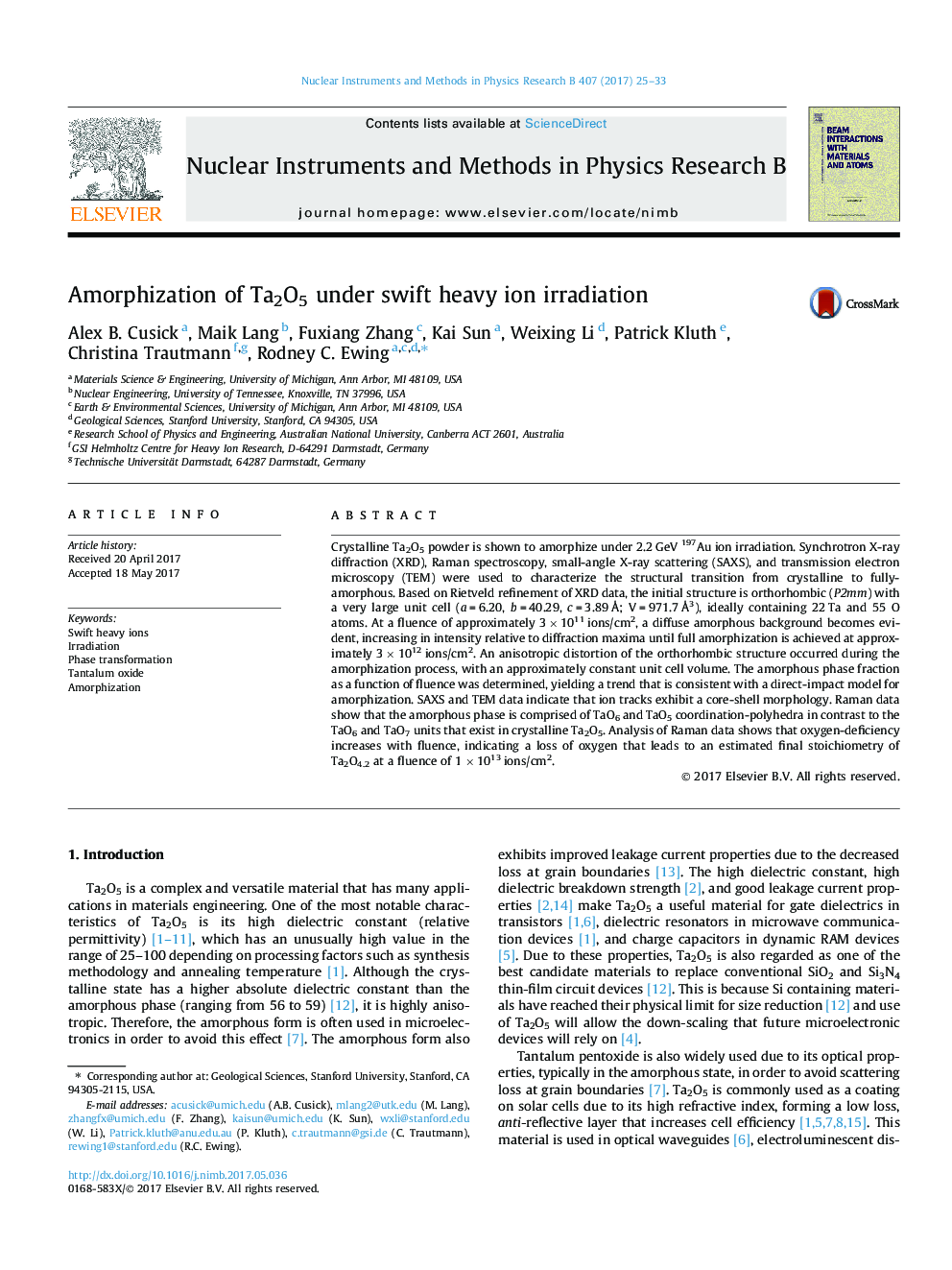| Article ID | Journal | Published Year | Pages | File Type |
|---|---|---|---|---|
| 5467505 | Nuclear Instruments and Methods in Physics Research Section B: Beam Interactions with Materials and Atoms | 2017 | 9 Pages |
Abstract
Crystalline Ta2O5 powder is shown to amorphize under 2.2 GeV 197Au ion irradiation. Synchrotron X-ray diffraction (XRD), Raman spectroscopy, small-angle X-ray scattering (SAXS), and transmission electron microscopy (TEM) were used to characterize the structural transition from crystalline to fully-amorphous. Based on Rietveld refinement of XRD data, the initial structure is orthorhombic (P2mm) with a very large unit cell (a = 6.20, b = 40.29, c = 3.89 Ã
; VÂ =Â 971.7Â Ã
3), ideally containing 22Â Ta and 55 O atoms. At a fluence of approximately 3Â ÃÂ 1011Â ions/cm2, a diffuse amorphous background becomes evident, increasing in intensity relative to diffraction maxima until full amorphization is achieved at approximately 3Â ÃÂ 1012Â ions/cm2. An anisotropic distortion of the orthorhombic structure occurred during the amorphization process, with an approximately constant unit cell volume. The amorphous phase fraction as a function of fluence was determined, yielding a trend that is consistent with a direct-impact model for amorphization. SAXS and TEM data indicate that ion tracks exhibit a core-shell morphology. Raman data show that the amorphous phase is comprised of TaO6 and TaO5 coordination-polyhedra in contrast to the TaO6 and TaO7 units that exist in crystalline Ta2O5. Analysis of Raman data shows that oxygen-deficiency increases with fluence, indicating a loss of oxygen that leads to an estimated final stoichiometry of Ta2O4.2 at a fluence of 1Â ÃÂ 1013Â ions/cm2.
Related Topics
Physical Sciences and Engineering
Materials Science
Surfaces, Coatings and Films
Authors
Alex B. Cusick, Maik Lang, Fuxiang Zhang, Kai Sun, Weixing Li, Patrick Kluth, Christina Trautmann, Rodney C. Ewing,
